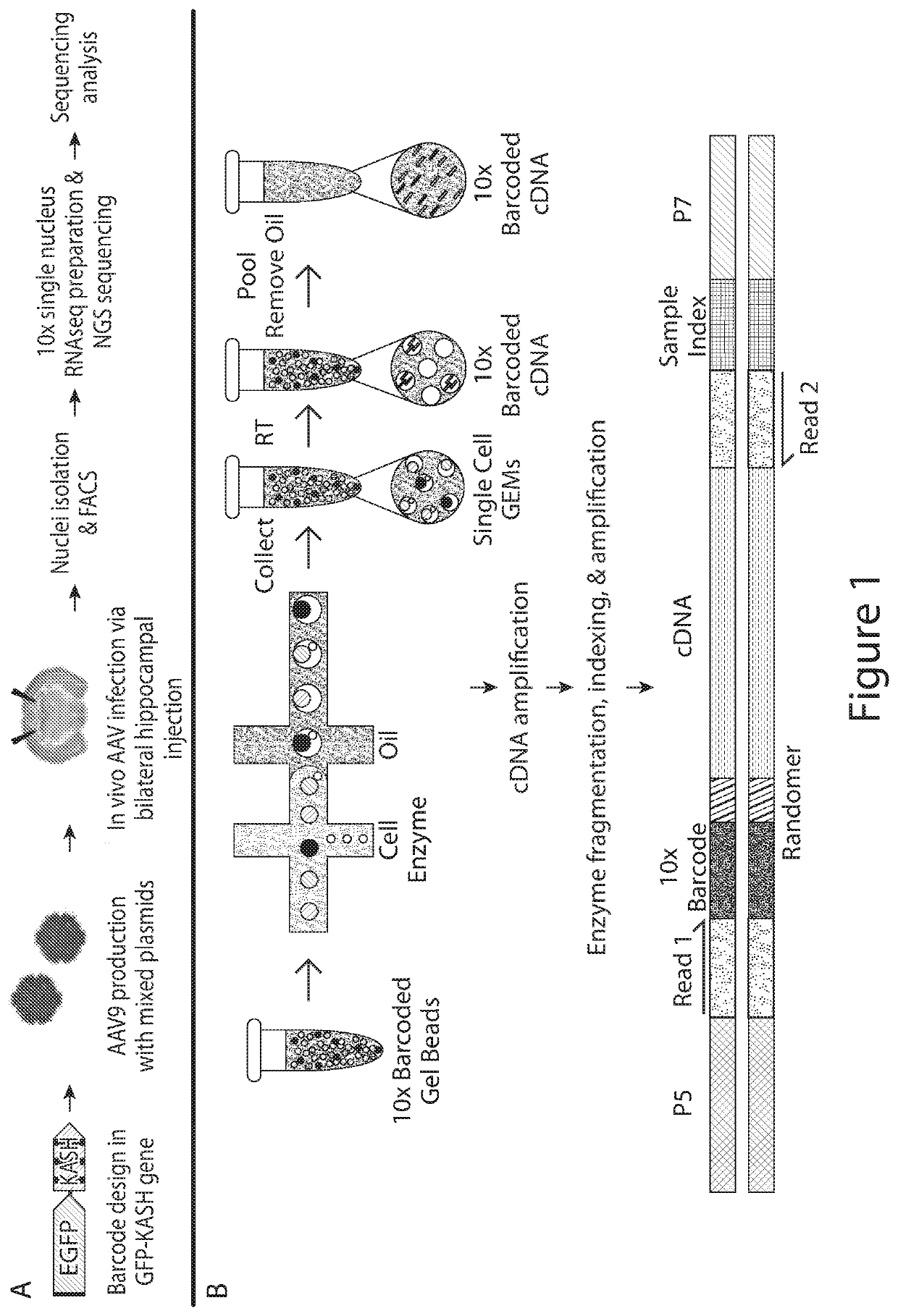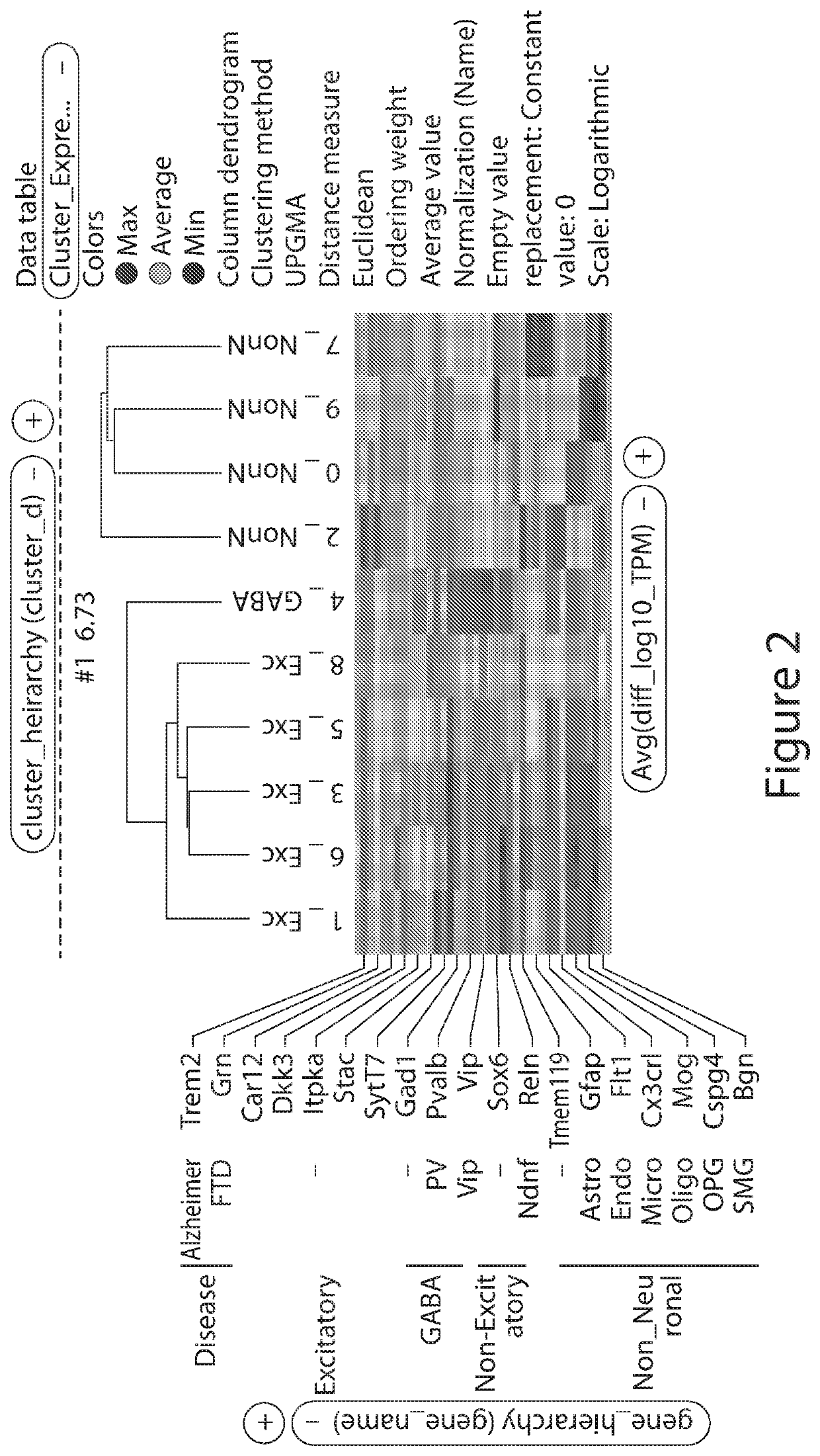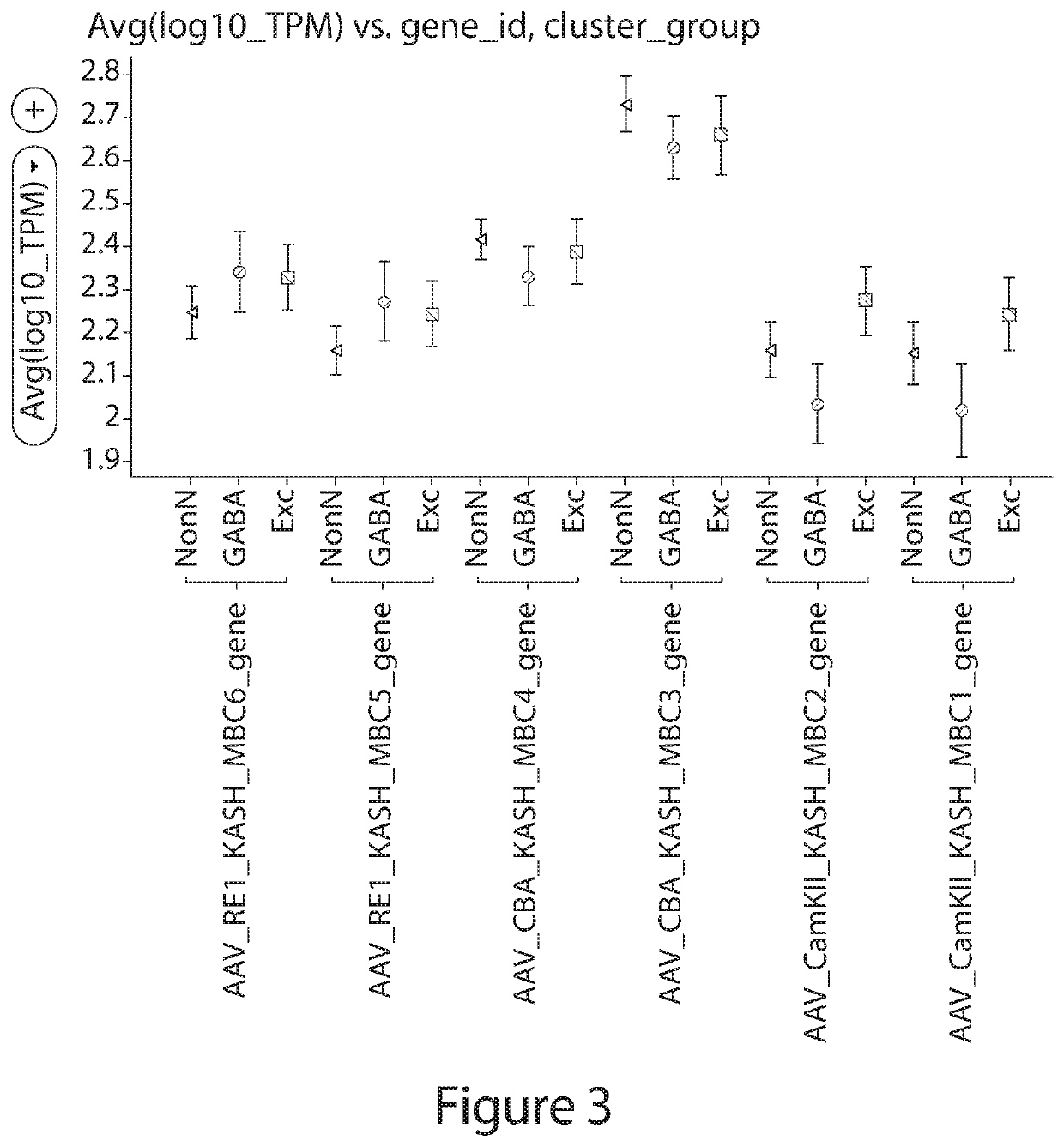Multiplexing regulatory elements to identify cell-type specific regulatory elements
a technology of regulatory elements and complexes, applied in the field of multi-plexing regulatory elements to identify cell-type specific regulatory elements, to achieve the effect of increasing the expression of transgenes
- Summary
- Abstract
- Description
- Claims
- Application Information
AI Technical Summary
Benefits of technology
Problems solved by technology
Method used
Image
Examples
example 1
Multiplexing Regulatory Elements (REs) in an In Vivo AAV-Based Infection to Evaluate Specificity of REs
[0202]Multiple regulatory elements were assayed in an in vivo AAV-based system in order to evaluate the cell specificity of the individual regulatory elements. This assay allows for the identification of cell specific regulatory elements and the magnitude of expression of each transgene under the cell specific regulatory element.
Design, Production and In Vivo Testing of Multiplexed RE AAVs
[0203]To test the ability of the system to multiplex three regulatory elements, a transgene of interest was operably linked to one of three following candidate REs: (1) CamKII, (2) CBA and (3) a regulatory element encoded by the nucleic acid sequence of SEQ ID NO: 1 (RE1). These REs were chosen with the understanding that the CamKII promoter exhibits preferential expression in excitatory neurons, the CBA promoter exhibits ubiquitous expression, and the regulatory element encoded by the nucleic aci...
example 2
Use of REs Identified Using an In Vivo AAV-Based Infection to Evaluate Specificity of REs
[0216]After validating the cell selectivity of the regulatory elements identified using a screening assay described herein, the regulatory elements can be utilized for targeting a specific transgene to a specific population of cells. Specifically, each regulatory element can be operably linked to a transgene to target expression selectively to a specific cell population over at least one, two, three, four, five, or more than five non-PV cells.
example 3
Multiplexing Regulatory Elements (REs) In Vivo at Large Scale to Evaluate Specificity of REs in Complex Mixtures
[0217]
TABLE 3Regulatory ElementL3 BarcodeL3.2 BarcodeConstruct 1 (CBA-EGFP-KASH)MBC7MBC7Construct 2 (EF1α-EGFP-KASH)MBC10MBC10Construct 3 (RE1-EGFP-KASH)MBC11MBC11Construct 4 (RE2-EGFP-KASH)MBC8MBC8Construct 5 (RE3-EGFP-KASH)MBC9MBC9Construct 6 (RE4-EGFP-KASH)MBC12MBC12Construct 7 (RES-EGFP-KASH)MBC13MBC13Construct 8 (RE6-EGFP-KASH)MBC14MBC14Construct 9 (RE7-EGFP-KASH)MBC15MBC15Construct 10 (RE8-EGFP-KASH)MBC16MBC16Construct 11 (RE9-EGFP-KASH)MBC17MBC17Construct 12 (RE10-EGFP-KASH)MBC18MBC18Construct 13 (RE11-EGFP-KASH)MBC19MBC19Construct 14 (RE12-EGFP-KASH)MBC20N / AConstruct 15 (RE13-EGFP-KASH)MBC21MBC21
[0218]To test whether the multiplex assay was capable of evaluating cell type specificity and magnitude of expression of individual REs in complex mixtures of cells, fifteen regulatory elements were assayed in an in vivo AAV-based system. This assay allows for the identific...
PUM
| Property | Measurement | Unit |
|---|---|---|
| nucleic acid | aaaaa | aaaaa |
| fluorescent | aaaaa | aaaaa |
| imaging | aaaaa | aaaaa |
Abstract
Description
Claims
Application Information
 Login to View More
Login to View More - R&D
- Intellectual Property
- Life Sciences
- Materials
- Tech Scout
- Unparalleled Data Quality
- Higher Quality Content
- 60% Fewer Hallucinations
Browse by: Latest US Patents, China's latest patents, Technical Efficacy Thesaurus, Application Domain, Technology Topic, Popular Technical Reports.
© 2025 PatSnap. All rights reserved.Legal|Privacy policy|Modern Slavery Act Transparency Statement|Sitemap|About US| Contact US: help@patsnap.com



